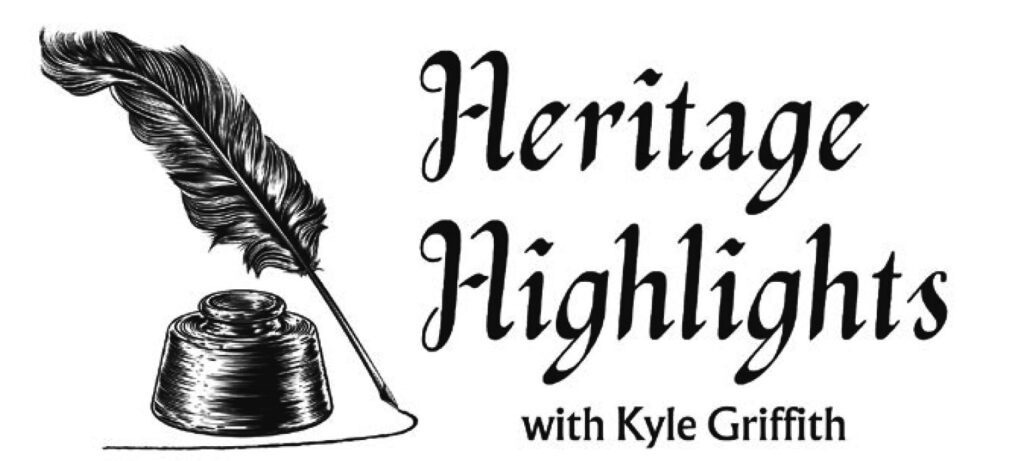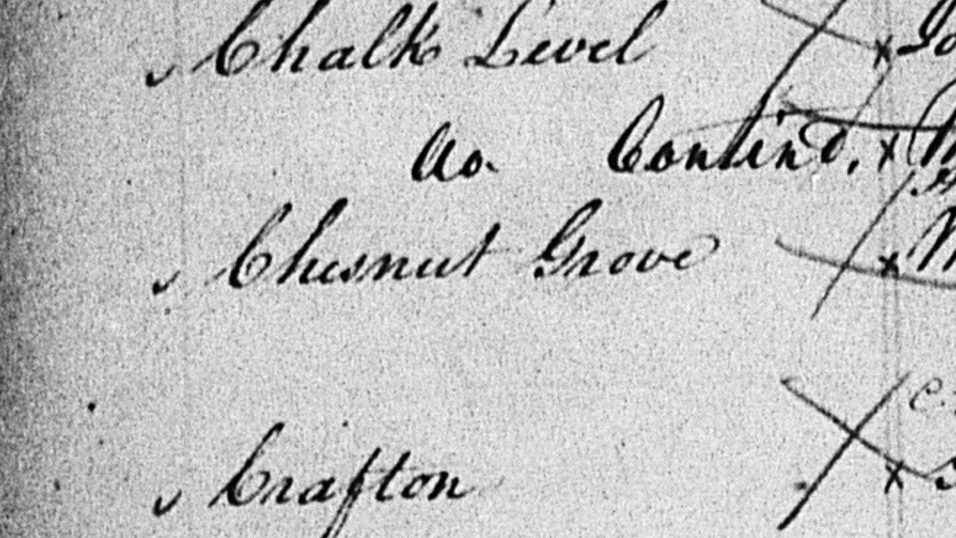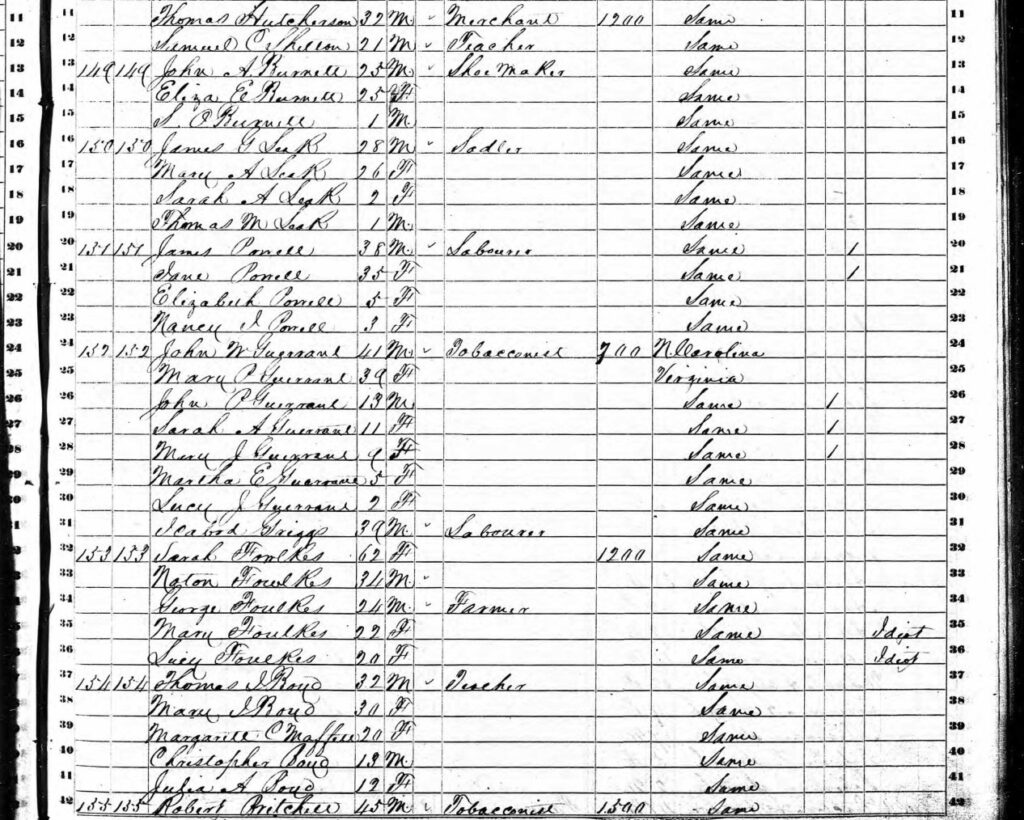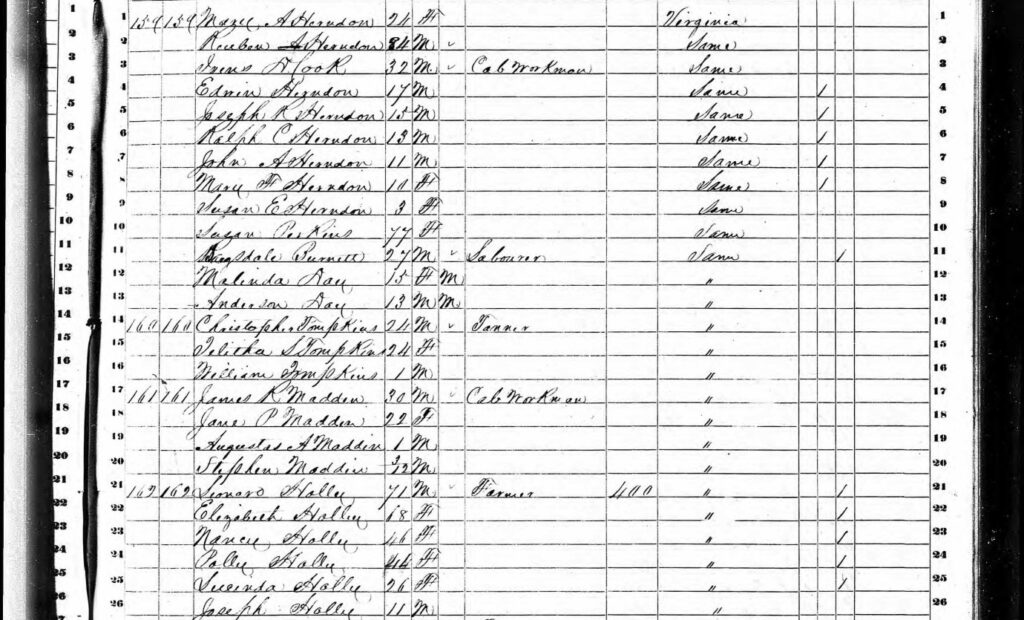
**This research was first published in the April 3, 2024 edition of the Chatham Star-Tribune newspaper as part of Kyle Griffith’s weekly segment entitled “Heritage Highlights.”

Mention of Chestnut Grove in Pittsylvania County’s early postmaster appointment records
In 1850, the budding community of Whitmell was known as “Chestnut Grove.” Several miles to the east, the Richmond and Danville railroad’s construction remained underway. Thanks to a charter introduced years earlier by Whitmell Pugh Tunstall (1810-1854), namesake of the Whitmell community. At last, the county could soon benefit from steam engine power. Still, many farmers continued using unreliable rolling roads and river batteaux to transport tobacco. Here is an insightful perspective of the Chestnut Grove community as it existed in the Antebellum era.
Census records provide a peek into the social dynamics of the Chestnut Grove community. There were two tobacco manufactories, various dry goods and general merchandise stores, a private school, and all the necessary tradesmen. Robert Pritchett (1804-1883) was among the early tobacconists in the area. His nephew, Albert Gallatin Pritchett (1819-1900), worked for him as a merchant. (Albert later became President of the Board of Overseers of the Poor for the county poorhouse). Nearby, John William Guerrant (1808-1878) also established a tobacco manufactory. Both families produced some of Whitmell’s most influential residents in following generations. The village physician, Dr. Oliver E. Hambleton (1800-1856) treated the ailments of local people, and two of his sons also had an education in medicine. Around 1830, Dr. Hambleton donated the land on which the private school, “The Academy” was organized. Some of the known teachers include Joseph Godfrey (Abt. 1805-1869), who taught across the county, Samuel Calland Shelton (1829-1899), and Thomas J. Boyd (born 1815) who both lived in Chestnut Grove. Several clergymen provided preaching for the community’s ministry and furthered efforts in education. Samuel Bryant and Robert Bibb were both Methodist clergymen. Samuel Rice served as a Presbyterian clergyman and James Beck served as a Baptist clergyman.
William H. Payne (1814-1861), was a store merchant who later became community postmaster. He married Eliza Cousins Pritchett (1813-1851), a sister to the mentioned A. G. Pritchett. (William & Eliza’s granddaughter, Archie Swanson Beverley, served as principal of Whitmell School decades later.) Also living on the property were two others: a tailor, Daniel Wootten, and William Garrett, who was a store clerk. Nearby, a sawyer named A. S. Buford refined lumber for the building of homes and other dependencies. He also lived with a merchant, Thomas Hutcherson, and William Price, a store clerk.

This page from the 1850 census shows the names Hutcherson, Shelton, Burnett, Leak, Powell, Guerrant, Griggs, Fowlkes, Boyd, and Pritchett families all living near each other.
Throughout the community were skilled craftsmen who provided for their neighbors. John A. Burnett worked as a cobbler to make and repair shoes. James G. Leak worked leather into riding saddles for horses. Several tailors, including Alexander Smith made clothing (during a time when most people only had a couple suits of clothes to last the whole year). James Hutcherson and Nathaniel Price, Jr. were wheelwrights who repaired wagons and made new wheels in their shop together. The nearest village blacksmiths were Raleigh Eanes, Green Hazlewood, and his younger brother Richard Hazlewood. Three carpenters lived close by as well, namely John Simmons, Caleb Reynolds, and Buck Williamson.
The rest of the community worked as the backbone of the Old Belt in tobacco farming. About a decade earlier, exciting new techniques developed in the tobacco curing process. The race to improve and perfect the creation of “yellow tobacco” swept across Virginia and North Carolina. Among one of the oldest residents at the time was Reuben Herndon (1765-1855), an ancestor to the writer. He was born before the Revolution and farmed with his son named Doctor Aaron Herndon (1803-1888). Some of the other tobacco farming families included Leonard Holley (1779-1863) his sons William C. Holley (1807-1884) and Griffith D. Holley (1823-1888) who both had farms. Nathaniel Price, Sr. (1790-1856) and his nephew Jesse Price (1810-1860) were farmers living close together. George Fowlkes, his brother James Fowlkes, Sanford Lanier, and Pleasant Dodson were also notable tobacco farmers in the community. Where there were farms, there was also a need for hands, so many of the community members worked as farm laborers. Those listed were Samuel Gauldin (1817-1874), Joseph White, and John Mann. James Powell (1812-1877), another ancestor to the writer, was a laborer listed on the census adjacent to John W. Guerrant of the tobacco manufactory.

This page lists the names Herndon, Cook, Perkins, Burnett, Day, Tompkins, Madden, and Holley.
The children and grandchildren of these settlers in “Chestnut Grove” curated many new educational opportunities in the community. The legacy of Whitmell and its participation in the Farm-Life school movement is unique in the context of American history. Prior to those advancements in learning and the worldly connections enjoyed by the railroad, the history of Chestnut Grove remains an obscure bit of the county’s history.
